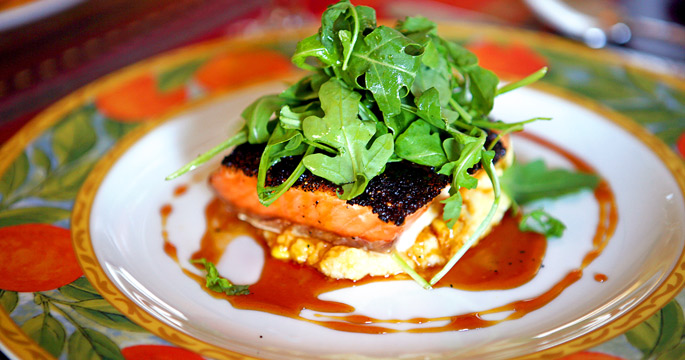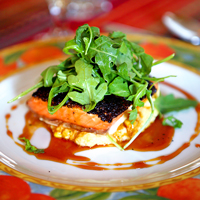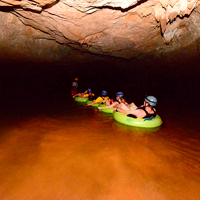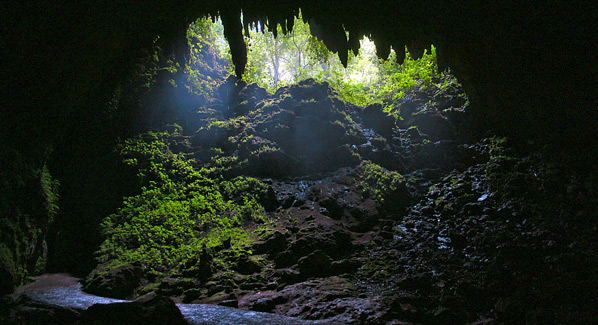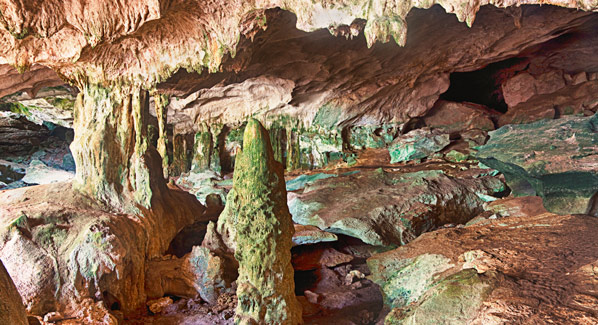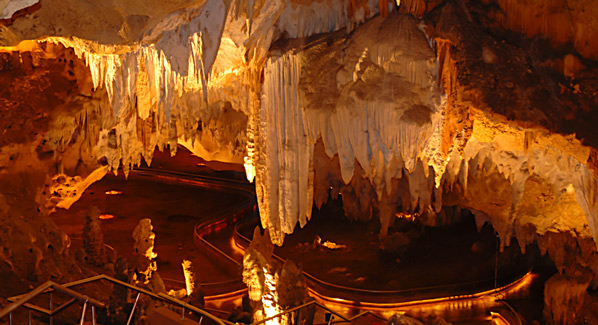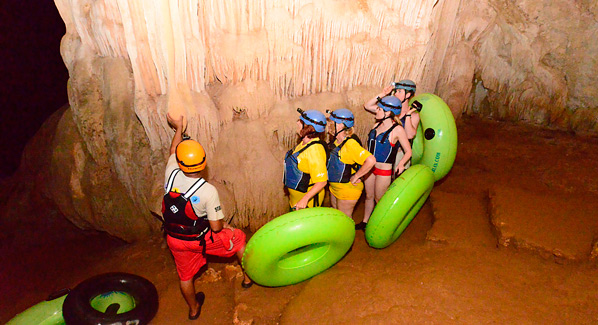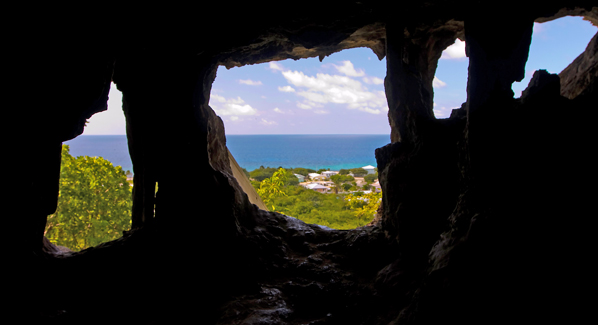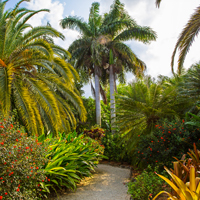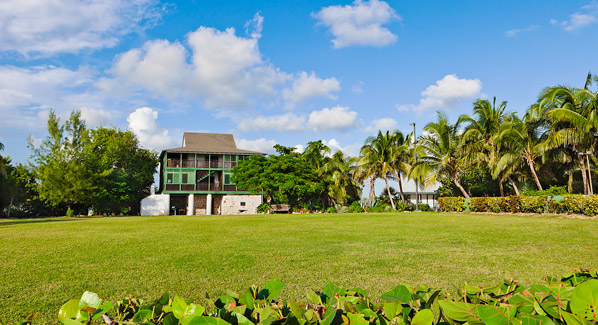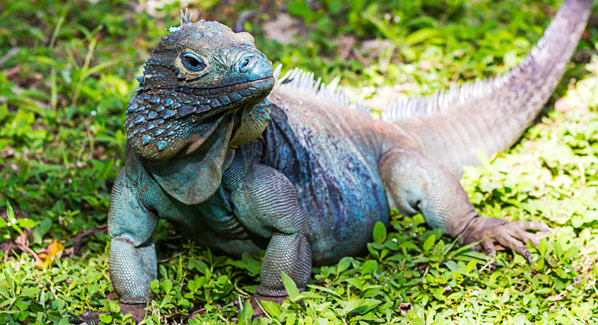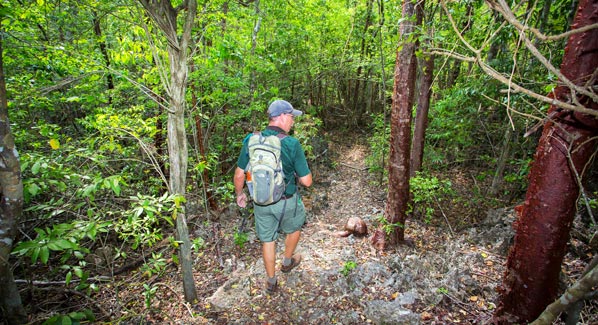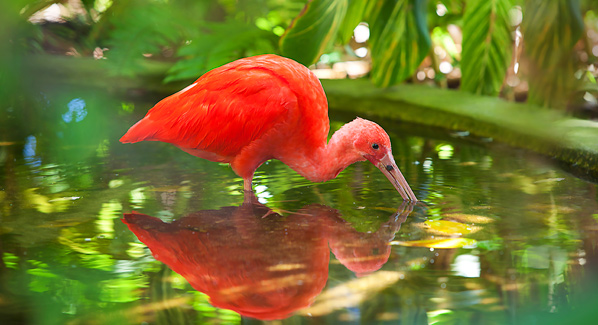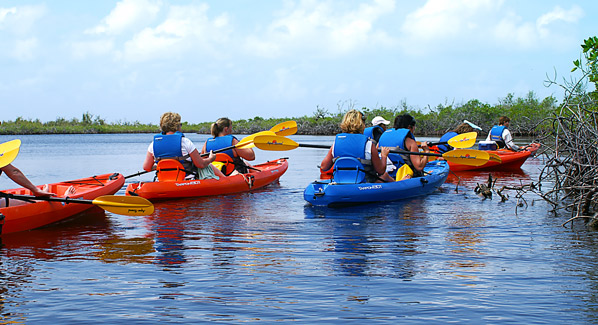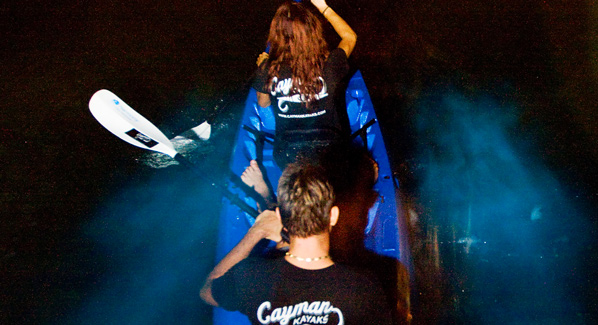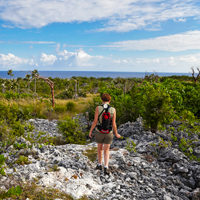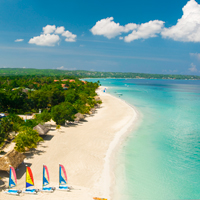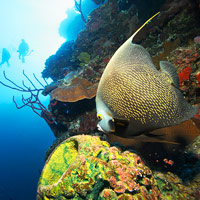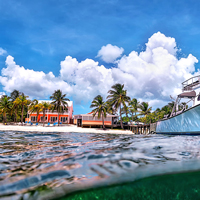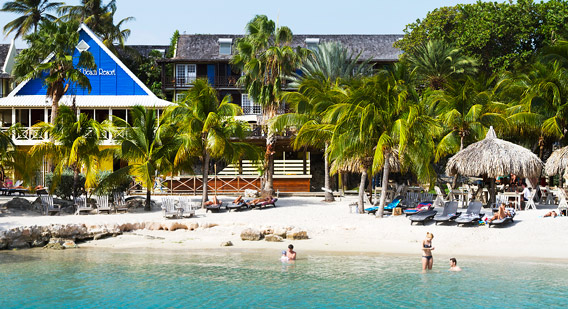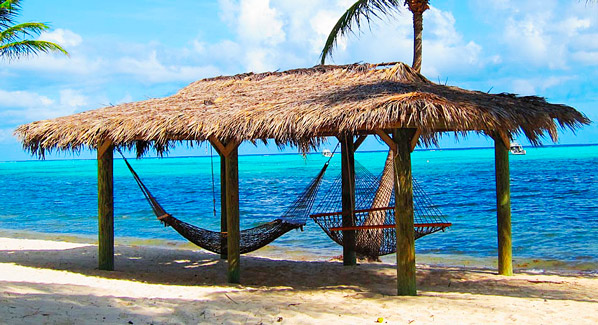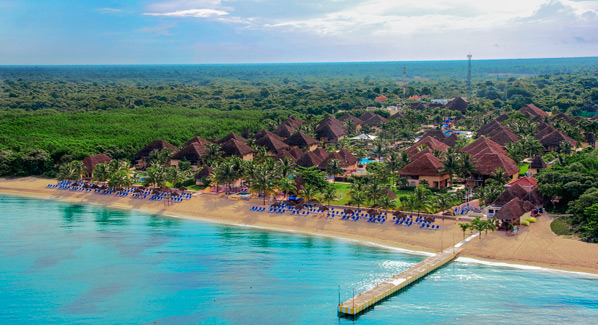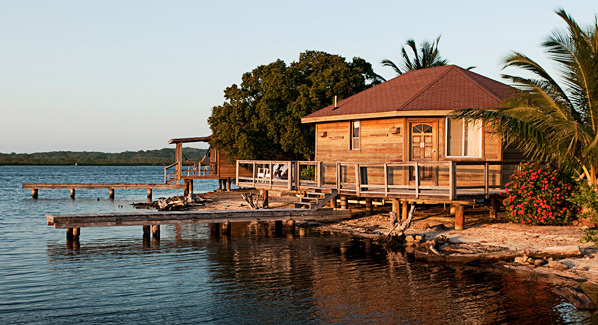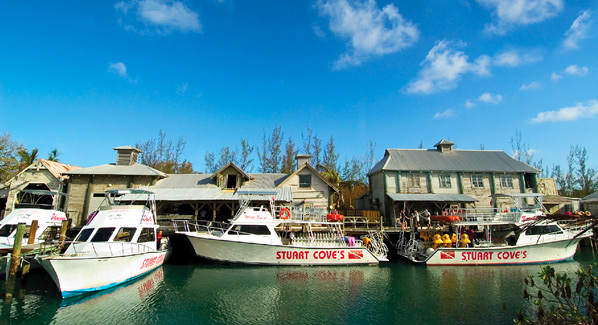From an outpost of the empire to a center for international finance, Grand Cayman Island has certainly grown up. And the worldly travelers who come to these sunny shores for both business and pleasure have a taste for upscale dining and unique flavors. They won’t be disappointed, as a new wave of celebrity chefs have joined talented locals restaurateurs to create a dining scene that is both diverse and delicious. Here are some of our favorites.
Ortanique
Think South Beach cool spiced with a healthy dose of Caribbean chic. Overlooking the marina at Camana Bay, Ortanique is the creation of South Florida culinary power duo Cindy Hutson and Delius Shirley, and a sister of Ortanique on the Mile in Coral Gables. Before she started seriously cooking, Cindy spent some time in the commercial fishing business, so she knows her fish.
Favorite Bites: There are some standards and favorites, but bet on whatever is on special. The best of what comes in on the dock that day can end up as tender spiced lobster stuffed inside of pillowy homemade ravioli or as tuna steak served with mango sauce. The restaurant throws pig roasts periodically — and the ribs are a perennial hit with diners. The Norma Salad, named for Delius’ mother, renowned Caribbean chef Norma Shirley, is a great starter or can be a meal for vegetarians. www.ortaniquerestaurants.com
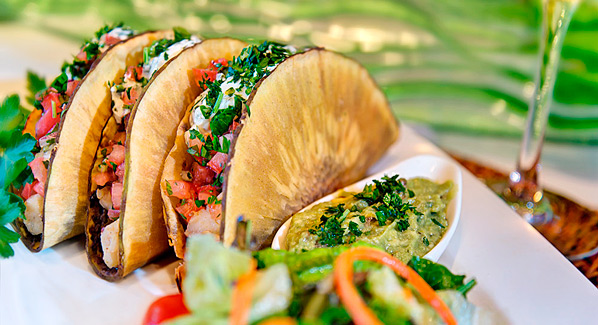
Mojitos and Breadfruit Fish Tacos are a favorite at Ortanique. The fresh catch of the day is dusted with coriander and cumin and served with black bean corn salsa, pico de gallo and cilantro crema. Photo: Ortanique
Michael’s Genuine Food & Drink
How’s this as a two-fer: Michael’s is right next door to Ortanique. Same great view, same great attitude, completely different food. This is the second outing by James Beard Award-winner Michael Schwartz, whose Miami restaurant is a showplace for the slow-food farm-to-table movement. Schwartz and his team have successfully transplanted the organic vibe to Cayman. Michael’s team here includes the talented young head chef, Thomas Tennant, who cooked at the original Design District location before overseeing the kitchen in Cayman. The menu is all about local, organic and sustainable, and that ethic permeates everything they do.
Favorite Bites: If it’s on the menu, try the lionfish. Tennant usually pan fries it with a light crumb coating; its firm-fleshed and fresh tasting, not unlike snapper. Michael’s divides its menu into plates that are small, medium and large. The wood-fired pizza is always wonderful or for something a bit more exotic the homemade fettuccine with poached tuna. michaelsgenuine.com/grand-cayman/
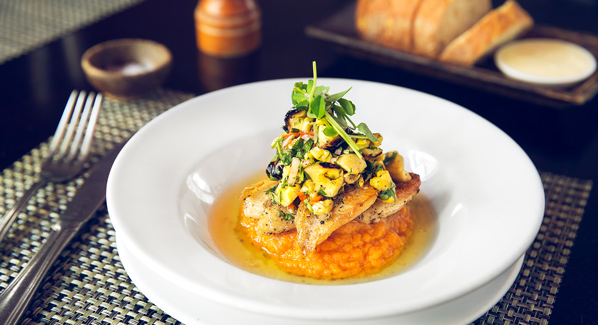
The menu at Michael’s Genuine Food & Drink reflects the owner’s commitment to the sustainable farm-to-table food moment, and incorporates a range of locally sourced ingredients. Photo: Rhian Campbell/Michael’s Genuine Food
Blue by Eric Ripert
It’s not immediately obvious that you’re in the Caribbean when you walk into Blue. The interior is edgy, elegant and very New York. That’s not surprising since Eric Ripert’s “other” restaurant is Le Bernardin, right around the corner from the Museum of Modern Art and widely thought to be the best in Manhattan. Successfully transplanting a restaurant, especially one as famous as Le Bernardin, is a tricky business and a lot of excellent chefs have failed. Not Ripert. Blue is a home run. You won’t see shorts and flip-flops in the dining room but you will get a wine list with more than 800 bottles. Service is slick and professional and the food fully lives up to expectations. If you’re a fan of Le Bernardin, the prices won’t be a surprise. But even if you’re used to pricey resort meals, Blue may shock the wallet a bit: figure $250-350 — per person. Having said that, Blue delivers the kind of meal you’d expect at that level.
Favorite Bites: Blue offers several prix fixe meals, a four-course tasting menu and a seven-course tasting menu plus special menus, so the chef is going to have a lot to say about what you eat. Don’t worry; whatever shows up is going to be delicious: Tuna foie gras, octopus a la plancha, yellowtail tartare with wasabi and grape vierge, chocolate tart. www.ritzcarlton.com/en/Properties/GrandCayman/Dining/Blue- byEricRipert/Default.htm
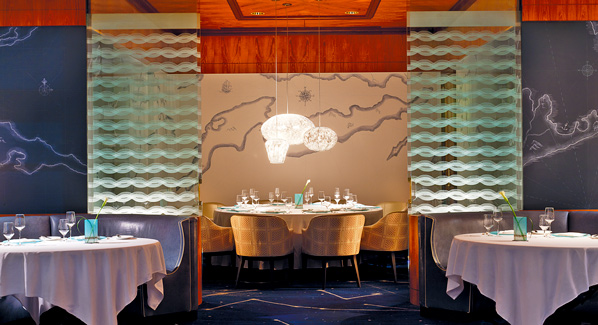
The understated elegance of the dining room at Blue is a perfect complement to the upscale menu, which is the product of award- winning chef Eric Ripert, the man behind New York’s famous Le Bernardin. Photo: Ritz-Carlton
Lone Star Bar & Grill
You will not confuse the Lone Star with any of the haute culinary palaces on the island. The place isn’t just a restaurant, it’s an institution. Generations of dive masters have plumbed the reef wall all day, and then brought their guests here to pound back beers all night — only to get up early and do it all over again. But there is food to accompany the alcohol, with reasonably priced burgers and real barbecue to go along with buckets of Coors longnecks and the rock’n’roll blasting from the stage. There are theme nights — trivia on Tuesdays, rock ’n’ roll bingo on Thursdays, jam session Wednesdays and the occasional Coyote Ugly dance contest — to liven up the proceedings. Don’t come here expecting a nice quiet dinner, but if you want a break from delicately flavored organic kale, have a thirst for a bucket of beer or just feel like partying, the Lone Star is the place.
Favorite Bites: Save the steak for one of the chichi places; the pulled barbecue pork platter is a winner for most folks or try the fajitas. lonestarcayman.com
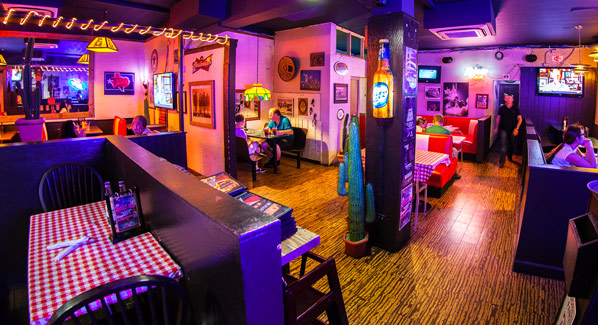
Grand Cayman’s Lone Star Bar & Grill is a little slice of Texas roadhouse in the Caribbean. A long-time favorite with the scuba diving crowd, it’s the place to go for burgers, BBQ and cold beer. Photo: Lone Star
Mizu
As chic as the Lone Star is kitschy, Mizu has a modern pan-Asian vibe. Entering the sleek, dimly lit dining room, the walls are accented with angled wooden slats while the sushi bar lights up the back of the room with a come-hither glow. This is an unhurried cocktails to finish kind of place, with a gentle hubbub rising as the tables fill. The menu is varied and you can go dim sum to get a taste of it all, order sushi, sashimi or rolls, or go with appetizers and mains.
Favorite Bites: First, try the cucumber lime sake mojito. Sounds like a culturally confused bartender gone bad, but it’s very, very good. The sushi is fresh, flavorful and well prepared, so if that’s your thing, do it. Okinawan style pork belly is both trendy and tasty. mizucayman.com
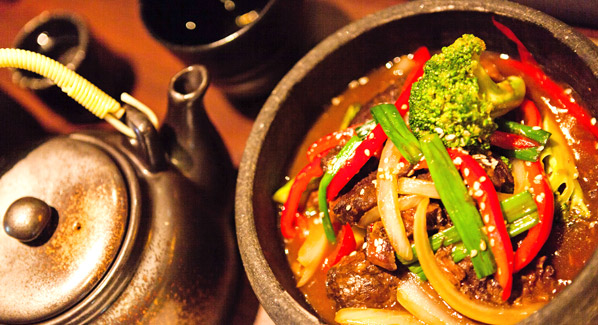
The savory Mongolian beef at Mizu combines braised beef with broccoli, scallion, red pepper and sesame seeds. The kitchen turns out an eclectic and innovative menu that follows a pan-Asian theme. Photo: Mizu
Guy Harvey’s Island Grill
Sure Guy Harvey can paint, but can he run a restaurant? Marine artist/biologist Guy Harvey has his fingers in a lot of pies — art, retail, clothing, even hotels and travel — but the pies here are the literal kind. The restaurant is right around the corner from Harvey’s gallery/studio where, day in and day out, you’ll find him on the second floor, painting while shoppers peruse his original canvasses. Maybe it’s that proximity that keeps the restaurant crew on their toes; whatever the reason, the Island Grill consistently turns out excellent island-style fare. The upstairs dining room is lined with Harvey’s originals — you can just dash in for a coffee and a canvas to go if you’re coming off a cruise ship — and there’s a porch with a view over Hog Sty Bay. This is well- prepared Caribbean cuisine: healthy portions of ultra-fresh fish done on the grill or delivered in a curry or bouillabaisse. There are well-priced dinner specials every night and the Grill serves lunch and breakfast as well.
Favorite Bites: It’s hard to go wrong with smoked wahoo pate and Harvey’s Surf & Turf — beef tenderloin steak, lobster and tiger shrimp. www.guyharveysgrill.com
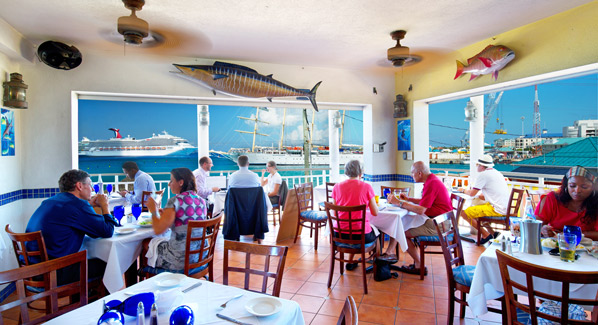
Harbor views and original marine artworks set the tone at Guy Harvey’s Island Grill, where the menu focuses on fresh seafood dishes, and the restaurant’s namesake artists is often in attendance. Photo: Guy Harvey’s Island Grill
Kaibo
Getting here is the hard part; Kaibo is on Rum Point which means either a long drive or a short hop by water taxi. There are two sides to Kaibo: a bar-and-grill on the beach with wood-fired pizza oven and an elegant gourmet restaurant upstairs. Unless you’re specifically looking for beachfront pizza by tiki torch, walk right past the ground level facilities and head for the “real” Kaibo above. The dining room is iconic West Indian: wood floors, high ceilings, gleaming white trim, white-skirted chairs, French doors that open onto a balcony overlooking the marina. Take a table outside if the weather’s right. Better yet, book a Luna Del Mar evening, the once-a-month fete held beachside under the full moon. After dinner a visit to the Rare Rum Bar is mandatory. Even if you don’t like rum.
Favorite Bites: The beer battered mahi comes with a side of green pea mint risotto and applewood bacon vinaigrette or, if you’re all fished out, get the hand rolled ricotta gnocchi with adobo chicken. www.kaibo.ky
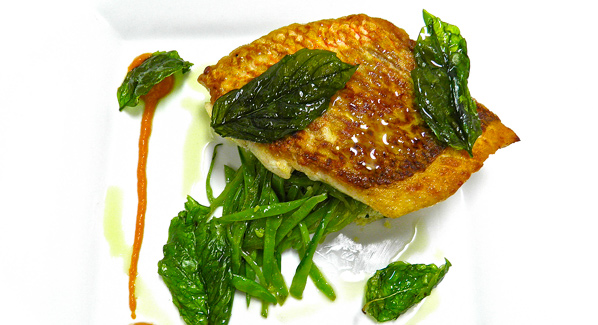
Kaibo’s upstairs melds continental fare with Caribbean flair, and includes locally sourced seafood entries. The setting is West Indian elegant, and the beverage list includes a selection of rare rums. Photo: Kaibo
The Waterfront Urban Diner
If you’re from Jersey and are addicted to diner food. you can get a pretty good fix at Waterfront Urban Diner. It’s on the crescent at Camana Bay and it has everything you’re craving after a week of eating fresh seafood: Italian subs, bacon, eggs over easy, schnitzel, even a “Mac attack” burger. The vibe is somewhere between a real diner and a lower Manhattan bistro, with brick walls painted white, industrial accents and that cozy clanking and murmuring. It also has large windows overlooking the marina which flood the interior with light — so it’s a diner where you can actually see your food. There’s just a touch of kitsch, like the syrup pitchers (ceramic Yorkies). The diner is a breakfast and lunch staple for the hedge fund guys who work in the office buildings on the Camana Bay property, so it’s pretty lively during the day.
Favorite Bites: The standards — pancakes, waffles, and wraps — are good, but give the Huevos Benedicto (poached eggs, refried beans and avocado on crisp tortillas) a try. waterfrontcayman.com
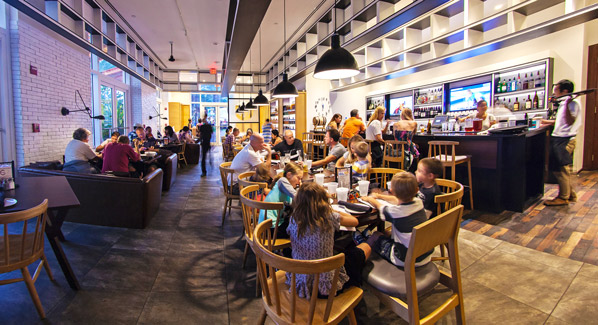
Comfort foods are the focus at the Waterfront Urban Diner. From breakfast to burgers, the vibe blends Jersey roadside diner fare with Manhattan Bistro style, and tosses in a hint of the tropics. Photo: Waterfront Urban Diner

